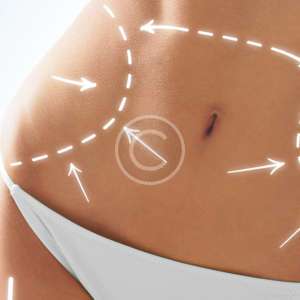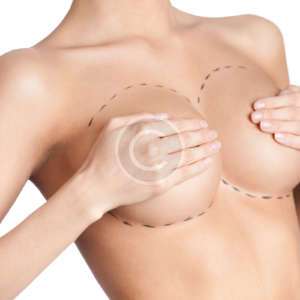
A scar revision is a procedure done on a scar to alter the appearance of the scar. The revision may improve the cosmetic appearance of the scar, restore function to a part of the body that may have been restricted by the scar, or improve an itchy scar
Who are good candidates ?
- Scar revision is usually performed on a people If they had leftover with scar tissue from surgery or trauma or any other reason, and they are bothered with the scar or its shape and size. Moreover, It is important to have realistic expectations. Contractures are large scars that pull areas of skin, causing tightness. Contractures can also affect the underlying muscles, joints and tendons, limiting function and movement of the affected body part.
- Burn scars that heal as a wide scar or in a puckered manner, possibly causing contractures
- Facial scars that are unattractive or that affect your facial expressions
- Ice pick or pitted scars that usually result from acne or blistering diseases such as chickenpox
- Long or irregular scars as a result of trauma or prior surgery
- Keloid scars that grow beyond the boundaries of the original wound or incision. They are often discolored, thick, elevated, and irregular scars that can be painful.
- Hypertrophic scars are similar to keloid scars except that they are confined to the original boundaries of the wound or incision.
Consultation
If you are considering scar revision surgery, you will first meet with a facial plastic surgeon for a consultation. Please bring information about your medical history, including previous surgeries, present and past health problems, and any medications, vitamins or nutritional supplements you are taking or have taken.
Your surgeon will evaluate your scar, as well as the thickness, color and elasticity of your skin. He or she will discuss which kinds of treatments are available to treat your scar.
If you decide to undergo scar revision and are found to be a good candidate, your surgeon will explain the techniques and anesthesia that will be used, the type of facility where the surgery will be performed, and the risks and costs involved. Be sure to ask your surgeon any questions you may have and also to express your concerns and expectations related to the surgery.
Procedure
The degree of improvement that can be achieved with scar revision will depend on the severity of your scarring, and the type, size and location of the scar. In some cases, a single technique may provide significant improvement. However, your plastic surgeon may recommend a combination of scar revision techniques to achieve the best results.
Topical treatments, such as gels, tapes or external compression, can help in wound closure and healing, or to reduce the ability of skin to produce irregular pigment. These products may be used to treat existing surface scars and discoloration, and to aid in the healing of scar revision procedures.
Injectable treatments may also be used. Dermal filler can be used to fill depressed or concave scars. Depending on the injectable substance used and your particular scar conditions, results may last from three months to several years. Therapy must be repeated to maintain results. Another form of injection therapy uses steroidal-based compounds to reduce collagen formation and can alter the appearance, size and texture of raised scar tissue.
Surface treatments are most often used for cosmetic improvement of scars. These methods can soften surface irregularities and reduce uneven pigmentation. Surface treatments are a controlled means of either mechanically removing the top layers of skin or changing the nature of tissue. These treatment options include:
- Dermabrasion is a mechanical polishing of the skin.
- Laser or light therapy causes changes to the surface of the skin that allow new, healthy skin to form at the scar site.
- Chemical peel solutions penetrate the skin’s surface to soften irregularities in texture and color.
- Skin bleaching agents are medications applied topically to lighten the skin.
- Some scars require layered closure. Layered closure is often used where excision extends to tissue below the skin surface or in areas with a high degree of movement. The first step, or layer, requires sub-dermal closure (below the skin surface) with absorbable or non-removable sutures. Layers of closure continue to build, concluding with closure of the remaining surface wound.
- Advanced techniques in scar revision include complex flap closures and W-plasty or Z-plasty techniques. Flap closures may reposition a scar so that it is less conspicuous or improve flexibility where contracture has restricted mobility.
- Pharmaceutical tissue substitutes may be used if ample healthy tissue is not present for closure of a scar excision. This is more likely with revision of severe burn scars.
- Tissue expansion can be a substitute for skin grafts. In this procedure, an inflatable balloon called a tissue expander is placed under the skin near the scar site. Over time, the balloon is slowly filled with sterile solution to expand the area of healthy skin. Once the skin has been stretched sufficiently, the expander and the scar are removed, and the stretched skin is moved to replace the scar tissue. This process can involve multiple surgical stages or procedures in order to achieve the final results.
Risks
Is it Safe?
Scar revisions surgery is typically safe, but as with any surgery, risks include infection, bleeding, or the recurrence of the scar. To avoid these, follow your care team’s pre- and post-operative instructions, and keep an open dialogue about any concerns you have throughout the recovery process. Most scar revision surgeries are successful procedures with few complications. However, complications of scar revision surgery can occur and become serious. Potential complications of scar revision surgery include:
Is it painful?
Pain control is important for healing and a smooth recovery. There will be discomfort after your surgery. Your doctor will treat your pain so you are comfortable and can get the rest you need. Call your doctor if your pain gets worse or changes because it may be a sign of a complication.
Recovery
The initial healing phase (called the inflammatory phase) generally takes between one to two weeks, during which time you may experience pain, localized swelling, and wound discoloration. During this period, you will need to carefully follow wound care instructions to avoid infection and wound dehiscence.
Every effort should be made to keep the wound clean and to dress it regularly with sterile gauze and breathable bandages to prevent moisture build-up. Some wounds require nothing more than a simple dressing, while others need specialized dressings and adjunctive therapies like hyperbaric oxygen to aid with healing.
Healing will continue for several weeks and as the new scar heals it will slowly refine and fade. With dermabrasion, chemical peel or laser resurfacing, you will experience similar conditions at the treated area, in addition to overall sensitivity.
Results
It usually takes between 12 and 18 months for a scar revision wound to fully heal. By that time, any skin discoloration should have normalized, and the shininess that tends to develop on new wounds will diminish or disappear
The final results of your scar revision surgery will be long-lasting; however it may take several months for your final results to become apparent and in some cases it may take a year for the new scar to fully heal and fade.
Scar revision surgery can lead variety of results. In addition to diminishing the scar’s appearance, the surgery can treat areas where tissue contraction is causing a loss of mobility and/or range of motion. Scars can also be painful sometimes, particularly if a neuroma (the abnormal growth of nerve tissues) is involved.
For others, the reduction of a scar’s appearance can help overcome an emotionally traumatic event or reduce feelings of embarrassment that can lead to social isolation.
Things to keep in mind
- After having scar removal treatment, you’ll need to protect your skin from the sun until your skin heals. If the sun’s harmful rays hit your treated skin, you can develop another scar.
- It can take months to see the results from laser scar treatment, and you may notice little improvement at first.







